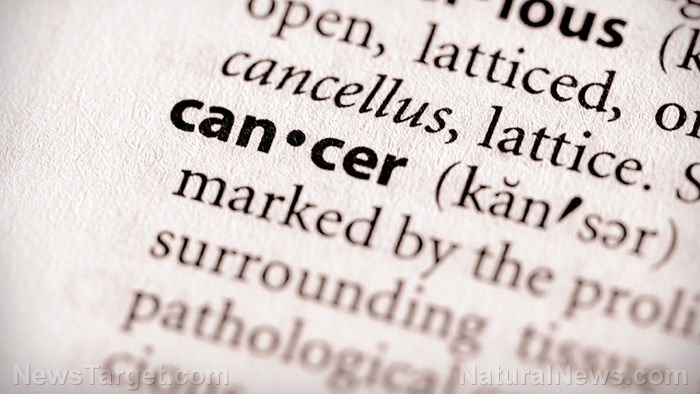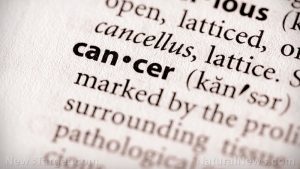
Bile duct cancer – causes, side effects and treatments at NaturalPedia.com
Friday, January 12, 2018 by Ralph Flores
http://www.naturalpedia.com/bile-duct-cancer-causes-side-effects-and-treatments-at-naturalpedia-com.html

Bile duct cancer (also known as cholangiocarcinoma) develops from the cells within the bile ducts, which are found in the liver. This type of cancer is not common – the American Cancer Society estimates that only 8,000 people in the U.S. are diagnosed with bile duct cancer each year. However, parasitic infections caused by liver flukes increase the risk of getting this type of cancer.
Doctors identify bile duct cancers based on the site of the tumor.
- Extrahepatic cholangiocarcinoma is a type of cancer found in the bile ducts outside the liver. It is the most treatable form of bile duct cancer, as well as the most common.
- Hilar cholangiocarcinoma is when bile duct cancer appears at the point where the right and left hepatic ducts join. Tumors that originate from this area are called Klatskin’s tumors.
- Intrahepatic cholangiocarcinoma occurs inside the liver. On average, only five to 10 percent of bile duct cancers are intrahepatic.
While bile duct cancer is known to affect senior adults, this can happen to any age group. The average age for intrahepatic cholangiocarcinoma is 70 years, and 72 for extrahepatic cholangiocarcinoma.

Known risks and symptoms of bile duct cancer
While the etiology of bile duct cancer is still unclear, there are several risk factors that increase a person’s likelihood of developing this type of cancer, aside from age. A person’s previous medical condition is one factor. Primary sclerosing cholangitis (PSC), a rare inflammation of the bile ducts, can increase the risk of cancer for people who have the condition. Additionally, ulcerative colitis, a long-term inflammation of the colon, can also heighten the likelihood of bile duct cancer.
Symptoms of bile duct cancer may not appear until the later stages of the disease; however, there are cases wherein these are diagnosed early because of a blockage in the bile duct. When this happens, bile cannot be released into the intestine and is absorbed by the blood instead. This is then seen in the skin and the eyes of the person in a condition called jaundice. Additionally, other symptoms of bile duct cancer include:
- Itching
- Light-colored or greasy stools
- Dark-colored urine
- Abdominal pain
- Loss of appetite
- Fever, nausea, and vomiting
Body systems harmed by bile duct cancer
Bile duct cancer is normally found in the liver, where the bile ducts are located. However, this cancer can spread to other parts of the body through blood vessels that feed the liver and through the lymphatic system, which is connected to the bile duct.
Food items or nutrients that may prevent bile duct cancer
Like other forms of cancer, our diet constitutes a great deal in reducing the likelihood of developing bile duct cancer. A balanced diet consisting of vegetables, fruits, whole grains, pasta, cereals, fish, poultry, and beans can go a long way in managing the risk of bile duct cancer. Additionally, cutting back on processed meat and red meat is a beneficial step in your diet.
Treatments, management plans for bile duct cancer
Depends on which stage bile duct is diagnosed, health care providers might provide you with ways to treat, or manage, the condition.
- Surgery is the main avenue of treatment when cancer has not yet progressed to a level where it has affected other organs. Depending on the site, surgeons will excise the affected tissue or remove the blockage in the bile duct using a stent.
- Chemotherapy is used to slow down the spread rate of cancer when it is not suitable to have it surgically removed. Side effects of this procedure include fatigue, hair loss, and a feeling of malaise. It may also increase your chance of infection.
- Radiotherapy fires a beam of radiation at the cancerous area. While it mainly targets tumors, other healthy tissues in the area are damaged because of the procedure.
Where to learn more
- Research Shows an Indian Herb May Prevent Liver Cancer
- Remove the Stones from Kidneys and Bile with this Simple Recipe
- Keep your immune system strong with pau d’arco
- Herbs.news
- Medicine.news
Summary
Bile duct cancer is a rare type of cancer that develops in the bile ducts in the liver. It can be diagnosed early when the tumor causes a blockage of the bile ducts. Still, there are foods that can be consumed to prevent this type of cancer.
Sources include:
Tagged Under: Tags: Bile duct cancer





